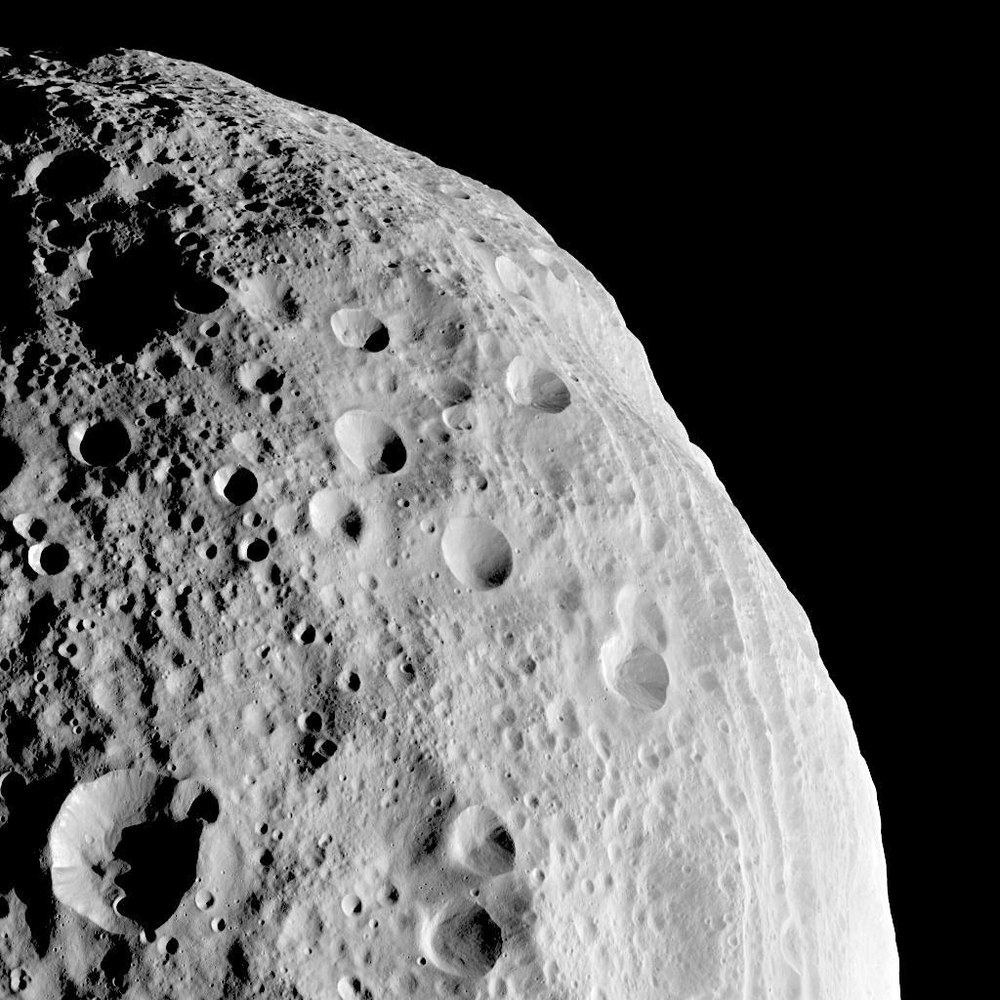Vesta and Ceres: born at the same time and yet so different


Asteroids, also known as minor planets, differ greatly in shape and size. Those with which we are more familiar are in almost all cases crater-strewn irregularly shaped bodies that can even have tiny moons. Most of them have a diameter of between 20 to 100 kilometres, a few up to 500 kilometres, but none are larger than Ceres: with its 1000- kilometre diameter, it makes up more than a third of the total mass of the asteroid belt.
Vesta, with a diameter of between 460 and 580 kilometres, is the third largest asteroid. It rotates around its own axis in five hours and 20 minutes, and requires 3.6 Earth years to complete an orbit around the Sun. As this asteroid is relatively close to the sun at 380 million kilometres, the light elements in the rock have evaporated and escaped into space.
It is assumed that only a very small percentage of water ice has remained, which is why planetary researchers describe Vesta as 'dry'. Spectroscopic observations with Dawn show that Vesta's crust consists of various types of rock. At the south pole, the collision with another asteroid has left a huge impact crater with a diameter of 460 kilometres and a depth of about 13 kilometres. Planetary researchers assume that the impact produced at least 50 smaller asteroids, which now follow their path around the Sun as 'Vestoids'. It is pretty certain that individual fragments have reached Earth. That is indicated by various meteorite finds in the Antarctic.
Data on the asteroid Vesta
Vesta | |
|---|---|
Mass: | 3.0 x 1020 kg |
Size: | 578 x 560 x 458 km |
Density: | 3.9 g/cm3 |
Rotation period: | 5.34 hours |
Orbital period: | 3.63 years |
Average distance from the Sun: | 353.3 million km |
It was on the night of New Year in Palermo in 1801 – in what was then the southernmost observatory in Europe – that Italian astronomer Giuseppe Piazzi discovered the dwarf planet Ceres. Before this discovery, eighteenth century scholars had wondered about the gap between Mars and Jupiter; after all, according to the empirical Titius-Bode law on the distances between the planetary orbits, there should have been a planet precisely in that location. With a diameter of 1000 kilometres, Ceres was, however, too small to close that gap on its own. So German astronomers continued their search.
Working together as a 'celestial police force' they noted one object after the other. Vesta was discovered in 1807 by the Bremen physicist and astronomer Heinrich Olbers. By the end of the nineteenth century, astronomers could proudly point to 463 recorded asteroids. Instead of a planet on the far side of Mars they had found the Main Asteroid Belt of the Solar System. Today we know almost half a million objects.
Data on the asteroid Ceres
Ceres | |
|---|---|
Mass:
| 8.7 x 1020 kg |
Size: | 974x 974x 910 km |
Density: | 1.98 g/cm3 |
Rotation period: | 9.08 hours |
Orbital period: | 4.6 years |
Average distance from the Sun: | 413.9 million km |
The discovery of the Main Asteroid Belt
It was on the night of New Year in Palermo in 1801 – in what was then the southernmost observatory in Europe – that Italian astronomer Giuseppe Piazzi discovered the dwarf planet Ceres. Before this discovery, eighteenth century scholars had wondered about the gap between Mars and Jupiter; after all, according to the empirical Titius-Bode law on the distances between the planetary orbits, there should have been a planet precisely in that location. With a diameter of 1000 kilometres, Ceres was, however, too small to close that gap on its own. So German astronomers continued their search.
Working together as a 'celestial police force' they noted one object after the other. Vesta was discovered in 1807 by the Bremen physicist and astronomer Heinrich Olbers. By the end of the nineteenth century, astronomers could proudly point to 463 recorded asteroids. Instead of a planet on the far side of Mars they had found the Main Asteroid Belt of the Solar System. Today we know almost half a million objects.

